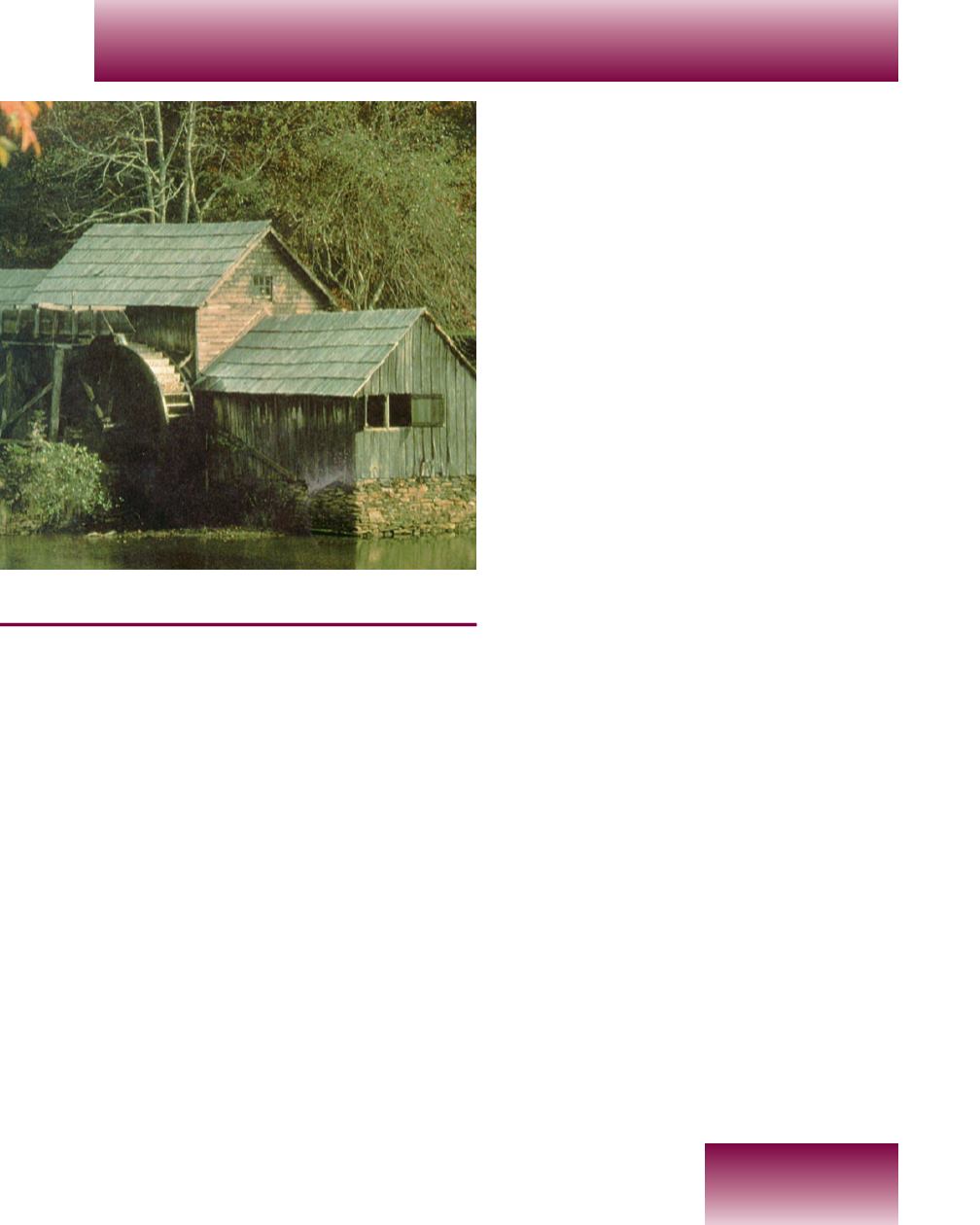
Chapter 7
●
111
industry that became the center of small
towns was the
gristmill
. A gristmill was a
large building located on a stream. A large
wheel was built on the outside of the
building. It was connected to a large round
stone on the inside of the building. Water
ran over the wheel and turned the stone
inside. In this way, corn, wheat, or other
grains were ground into flour. In some
places, the same idea was used for
sawmills.
Instead, a saw blade was
connected to the wheel. Water power
turned the saw blades. This allowed the
workers to cut logs into building boards.
As trails were widened and improved,
they became crude dirt roads. However,
they were hardly more than rutted dirt
paths. Because of this, traders in eastern
Pennsylvania decided to look for a strong
wagon that they could use to carry supplies
and trade items over thepoor roads and the
mountains to Pittsburgh.
The ConestogaWagon
S
uch a wagon was found near
Lancaster. Because it was built and
used by the Pennsylvania Dutch
farmers in the
ConestogaRiverValley
, it
was called the
ConestogaWagon
. Thiswagon
played a very important part in the
development of our state and the United
States. During its time, it was the only
wagon strong enough to carry supplies and
trade goods to the pioneers who settled the
Pennsylvania frontier. Conestogas were
heavilyused inour state from1750 to1850.
Today, you can see Conestoga Wagons in
somemuseums around the state.
During the Conestoga days, there were
very fewbridges over rivers.On some rivers,
ferryboat
crossings were built. Then
wagons couldbe floated across the rivers on
large rafts. One famous crossing on the
Susquehanna River was called
Harris
Ferry.
Travel and trade by Conestoga
wagon became very popular. Sometimes,
wagons had to wait several days for their
turn to cross the river on the ferry.
More and more Conestoga wagons were
built and used tomove trade goods. Better
roads had to be built. The new roads led to
more trade. By 1795, a stone surfaced road
was completed between Philadelphia and
Lancaster. This was the first long distance,
hard surface road in theUnited States.
To cover the $500,000 cost of building
the road, travelershad topay a toll (money)
A gristmill usedwater from a stream to
grind grains into flour.


